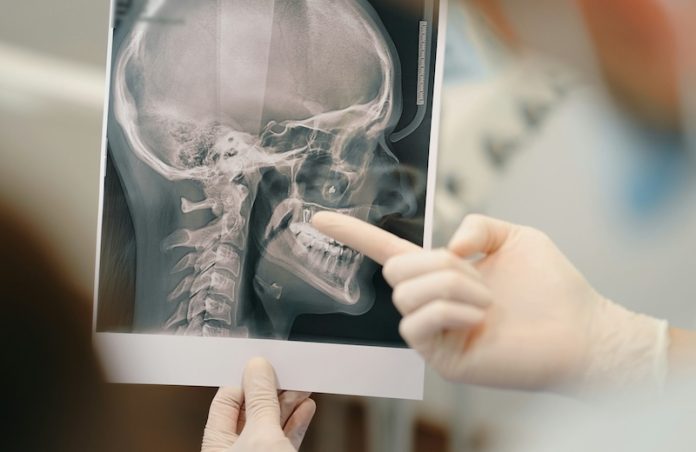
Scientists in Italy, working with researchers at the European Synchrotron (ESRF) in France, have discovered a new way to study how changes in the gut might be linked to Alzheimer’s disease.
Using a powerful X-ray imaging technique, they have found detailed structural changes in the intestines of mice with Alzheimer’s. Their findings, published in Science Advances, could help scientists better understand the gut-brain connection and lead to earlier detection of the disease.
Alzheimer’s is the most common form of dementia, causing memory loss, inflammation in the brain, and the gradual death of brain cells. In recent years, researchers have found increasing evidence that the brain and gut communicate through neurons found in both organs. Disruptions in this connection have been linked to neurological diseases, including Alzheimer’s.
A key player in this connection is the gut microbiota—the trillions of bacteria and other microorganisms living in the intestines. These microbes influence digestion, immune function, and even brain health. Scientists believe that changes in the gut’s bacterial balance, known as dysbiosis, may play a role in Alzheimer’s.
When harmful bacteria multiply, they can produce toxic substances that cause inflammation and weaken the barriers between the gut and the brain. Some researchers suspect that these harmful bacteria may escape into the bloodstream, reach the brain, and trigger Alzheimer’s, but direct evidence is still limited.
To investigate this further, the research team used an advanced X-ray imaging method called nano- and micro X-ray phase-contrast tomography (XPCT). Unlike traditional methods, XPCT allows scientists to examine soft tissues in 3D with high precision—without needing to cut, stain, or alter the samples in any way.
The researchers scanned gut tissue from mice with Alzheimer’s at ESRF’s high-powered beamline in Grenoble. Their images revealed several changes in the gut structure, including alterations in the villi (tiny finger-like projections that absorb nutrients) and crypts (glands that help maintain gut lining).
They also noticed changes in important gut cells, such as Paneth and goblet cells, which help protect the intestines and prevent harmful bacteria from spreading. Additionally, they detected neurons and immune-related cells in the gut lining, supporting the idea that the gut and brain are closely linked.
These findings suggest that gut health may play a bigger role in Alzheimer’s than previously thought. The ability to detect these early structural changes in the gut could lead to new ways of diagnosing the disease before symptoms appear.
“This technique is a major breakthrough for gut research and could be crucial for early detection and monitoring of Alzheimer’s,” said lead researcher Alessia Cedola from the Institute of Nanotechnology in Italy.
The next step for the team, along with researchers Francesca Palermo and Claudia Balducci, is to further explore how the gut communicates with the central nervous system. They hope to use XPCT to better understand the role of the enteric nervous system, which controls the gut, in Alzheimer’s disease.
“By learning more about these processes, we hope to find new treatment targets and develop better therapies for this devastating disease,” Cedola said. “The ESRF will continue to be an important part of our research, and we look forward to making more discoveries in the future.”
This study highlights how cutting-edge imaging technology can reveal hidden connections between different parts of the body and may help scientists unlock new ways to fight Alzheimer’s disease.
If you care about Alzheimer’s disease, please read studies about the protective power of dietary antioxidants against Alzheimer’s, and eating habits linked to higher Alzheimer’s risk.
For more information about brain health, please see recent studies that oral cannabis extract may help reduce Alzheimer’s symptoms, and Vitamin E may help prevent Parkinson’s disease.
The research findings can be found in Science Advances.
Copyright © 2025 Knowridge Science Report. All rights reserved.



